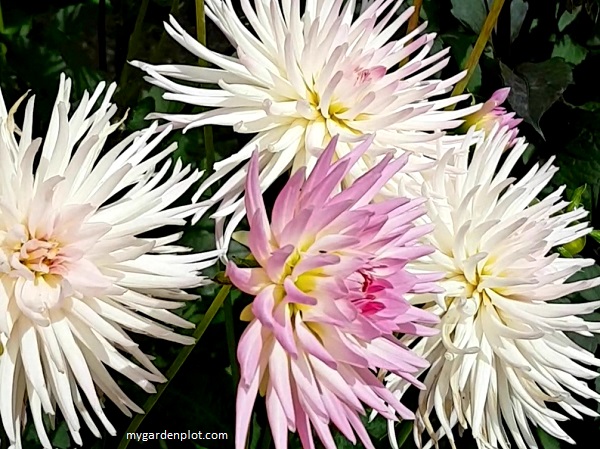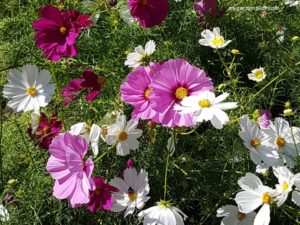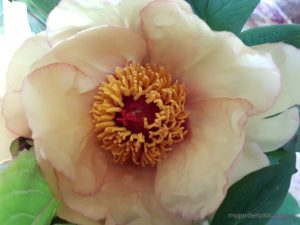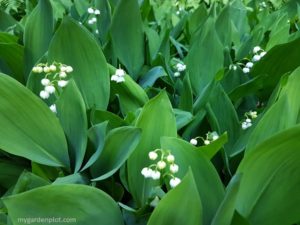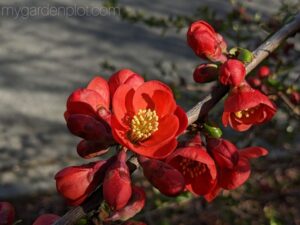About Dahlia Flowers : Dazzling Colours
Before having dahlias in the garden, we had the impression they were difficult to grow. Nothing could be further from the truth. Dahlias flowers are easy to grow! Whether you are new to gardening or becoming a dahlia enthusiast, these are easy to grow. Though not a low maintenance plant, some plant care basics need to be followed and indeed, knowing how to overwinter dahlia tubers is essential if you want to have them again the next year. They are worth the extra work – Dahlia flowers brighten any sunny summer garden!
Dahlias are herbaceous perennials with outstanding colourful flowers – they are certainly a high-impact plant. The species is native to Mexico, the mountainous regions in Central America through to Colombia, South America. They thrive in the Pacific Northwest, where sunny warm summer days are accompanied by cool summer night temperatures making it ideal for dahlias. Today, the overwhelming selection of over 20,000 hybrid varieties means there is no shortage of choices with variations in size, colour, and flower form. Blooming from July through to September, summer gardens become ablaze with every shade of colour.
Dahlias At A Glance
Type: Herbaceous Perennials
Location: Full Sun
Blooming Season: Summer, Autumn (Fall)
Size: Most average around 1 – 1.5 metres (4 – 5 feet) tall (some dwarf bedding dahlias are 60 cm or 24 inches tall)
Zones: 8, 9, 10, 11 (see below how to store during winter in colder regions)
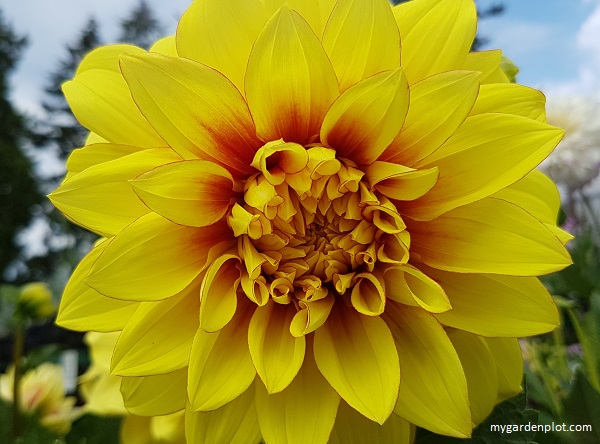
Where And How To Plant Dahlias
Dahlias grow from tubers, which should be planted after the last frost in mid or late spring when the soil warms up. They thrive in well-drained, fertile soil that is slightly acidic. And in a sunny location that gets at least six hours of direct sun and shelter from strong wind. In regions with scorching summers over 30C (86F), dahlias do better in a site with morning sun and some afternoon shade protection.
To plant the tuber, dig a hole at least 15 cm (6 inches) deep. Place the tuber with the “eyes” pointing upwards. Or place the dahlia tuber on its side. If the tuber started to sprout before you were ready to plant it, cut it back to about 2.5 cm (1 inch). This helps strengthen the stalk.
Before planting the dahlia tubers, mix in bone meal and compost to the soil before filling the hole over the tubers. With tall varieties, stake them early at the time of planting the tuber. This supports the dahlia plant as it grows. Staking them at this stage helps prevent damage to the tuber.
Dahlias can also be planted in containers and started indoors to get ahead in the growing season.
How To Grow And Care After Planting Dahlias
To avoid tuber rot, do not water immediately after planting. Wait until it starts to sprout out of the ground. Once it warms up and soil begins to dry out more frequently, you may need to water every second or third day. Water deeply to reach past the roots and ensure there is good moisture.
Dahlia plants are heavy feeders and will need regular fertilizing throughout summer with either a weekly liquid feed or every three to four weeks with a slow-release granular fertilizer. The fertilizer to promote flower growth should be low nitrogen (or no nitrogen). Too much nitrogen encourages more foliage than blooms and can make the stems leggy and easy to flop over.
For taller varieties, pinch or ‘stop’ the plant by pinching out the stem’s growing point. This will encourage new shoots to grow and create a bushier plant.
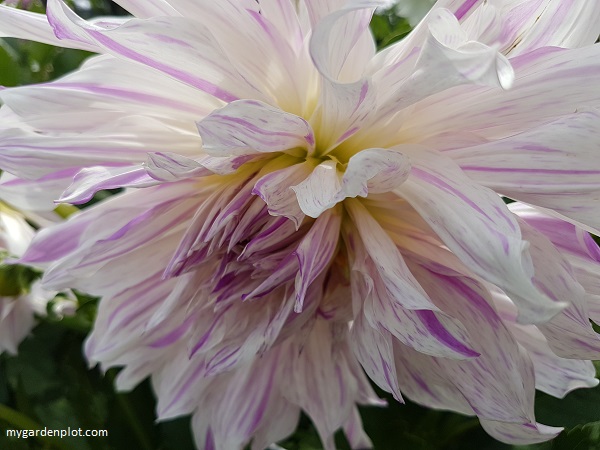
Disbudding Dahlias And Extend Flower Production
Disbudding dahlia buds promotes a larger central flower on a stem. This is true for the larger varieties. If you find you have two or three buds on one stem, remove the smaller ones and leave the central bud to develop. This lets the plant put more energy into that bud and increasing its flower size.
Removing the faded flowers (if not already as cut flowers) and its stalks increase new growth and bud production for a more extended display of flowers.
RELATED TOPIC: Buyer’s Guide On How To Choose Hand Pruners (Secateurs)
Overwintering Dahlias Tubers
On the first autumn or winter frost, the dahlia plants will blacken. Storing the tubers over winter may need to be necessary if you wish to grow them again the following spring. Most dahlias are hardy to zones 8 or 9. Where winters are dry, leaving them in the ground should be okay with a layer of dry mulch for protection. However, in the Pacific Northwest region, our winters tend to be wet. And even though we are in zone 8, we need to prepare them to overwinter to prevent rotting over the winter. If in doubt, it is always best to overwinter dahlia tubers. I generally lift and store the tubers by end of autumn. This also makes it easier to divide in spring.
To overwinter, carefully dig out the tubers. Remove the soil and then leave them out to dry for a day or two. Dust the dahlia tubers with garden sulphur to protect against mould. Then place in a dry and clean cardboard box with slightly dampened peat moss surrounding each tuber. Check them through the winter season and add a few drops of water if they begin to shrivel. Also, check for fungus infections. Remove any portions affected and apply another dusting of garden sulphur. Keep them in a cool area like a garage or greenhouse where temperatures are kept above freezing.
Pests And Diseases
Dahlias, for the most part, are generally trouble-free. However, they can be affected by various garden pests, including earwigs, slugs and snails, leafhoppers, spider mites, aphids, and beetles. And deer love them. Watch out for grey mould when tubers are stored (see the section above for overwintering), dahlia mosaic virus or mildew.
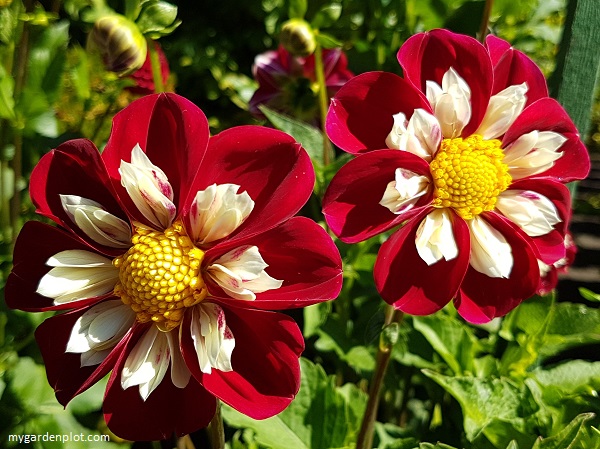
Spend more time in the garden! Large choice of gardening supplies for your garden bed and maintaining lawns, and fun art and sculptures for your garden and vegetable patch. Check out the latest deals for garden supplies. View the awesome deck decorations and patio furniture, and the necessary garden tools, and more.

